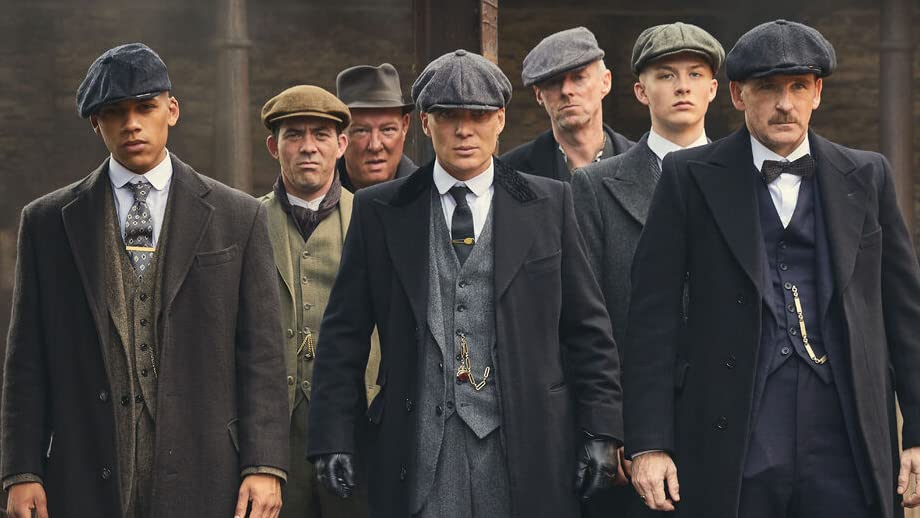Peaky Blinders: The Real Gambling Mobs of Birmingham and Pop Culture’s Influence
The hit TV series Peaky Blinders plunged millions into the gritty, smoke-filled streets of post-World War I Birmingham. It captivated audiences with its stylish portrayal of the Shelby family’s criminal empire. At the heart of their illicit operations, gambling, particularly illegal bookmaking and racecourse rackets, played a central role. While the show offers a compelling narrative, it blends historical fact with dramatic fiction. Let’s delve into the real Peaky Blinders gambling mobs of Birmingham and uncover how gambling truly intertwined with their underworld activities.
Birmingham’s Underbelly: A Breeding Ground for Gangs
Late 19th and early 20th-century Birmingham provided fertile ground for organized crime. Harsh living conditions and widespread poverty fueled gang formation.
The Rise of Street Gangs
Economic hardship pushed many young, working-class men into petty crime. They engaged in robbery and pickpocketing. These early efforts often involved brutal assaults. The city’s streets saw a rise in “slogging gangs.” These groups banded together to fight back against authorities and rivals. They sought control over local areas.
The Original “Peaky Blinders”
The actual Peaky Blinders emerged from areas like Small Heath in the late 1880s. A newspaper article from March 1890 first mentioned them. The gang consisted largely of young criminals. They engaged in robbery, violence, racketeering, and illegal bookmaking. Their distinct style included peaked flat caps, silk scarves, and bell-bottom trousers. This made them highly identifiable.
Gambling: The Lifeblood of the Underworld
Illegal gambling, especially around horse racing, offered a lucrative revenue stream for these gangs. They quickly moved to control it.
Controlling the Bookmaking Trade
The real Peaky Blinders, and later more powerful gangs like the Birmingham Boys, exerted significant control over illegal betting. They did not just place bets themselves. They actively ran protection rackets targeting bookmakers at racecourses.
English racecourses of that era often had open layouts. This made it easy for gangs to operate. Gang members would stake out desirable betting pitches. They then forced bookmakers to pay for these spots. This “rent” could amount to a substantial portion of a bookmaker’s daily earnings. Gangs also offered “protection” from angry bettors or rival groups. This lucrative racket provided consistent income.
The “Razor Blade” Myth
The popular notion that the Peaky Blinders sewed razor blades into their caps remains largely a myth. Historians find no evidence to support this. The name likely came from their peaked caps and their “blinding” sartorial style. It also referred to their ability to “blind” victims by pulling caps over their faces during attacks.
Fact vs. Fiction: The Show’s Dramatic License
Peaky Blinders draws inspiration from real history. However, it takes considerable creative liberties, particularly regarding the scale and timeline of the gangs’ activities.
Timeline and Scope
The real Peaky Blinders largely operated from the late 19th century until the early 1900s. The TV series sets its narrative after World War I, in the 1920s. This period actually saw the rise of different, more powerful gangs. The show also depicts the Shelby family building a vast, sophisticated criminal empire with political ambitions. In reality, the original Peaky Blinders were primarily street thugs. Their influence remained mostly confined to specific areas of Birmingham. They did not achieve the national or international reach portrayed in the series.
Characters and Conflicts
Characters like Tommy Shelby and his family are fictional. No historical equivalent of a single, central leader or a powerful Shelby dynasty existed. The show’s conflicts with figures like Billy Kimber and the Sabini gang have historical roots. However, the show often reimagines their specific interactions and ultimate fates. Billy Kimber was a real-life Birmingham gang leader. He controlled racecourse betting, but he was not a Londoner as initially portrayed in the show.
The Enduring Legacy of the Underworld
Despite the historical inaccuracies, Peaky Blinders successfully brought a fascinating period of British history to global attention. It highlighted the harsh realities of working-class life. It also showcased the allure and dangers of organized crime.
The show’s romanticized portrayal of the Peaky Blinders gambling mobs has cemented their place in popular culture. It reminds us how deeply gambling intertwined with the social fabric and criminal enterprises of industrial-era Britain. This complex relationship between sport, betting, and the underworld continues to captivate.














Post Comment